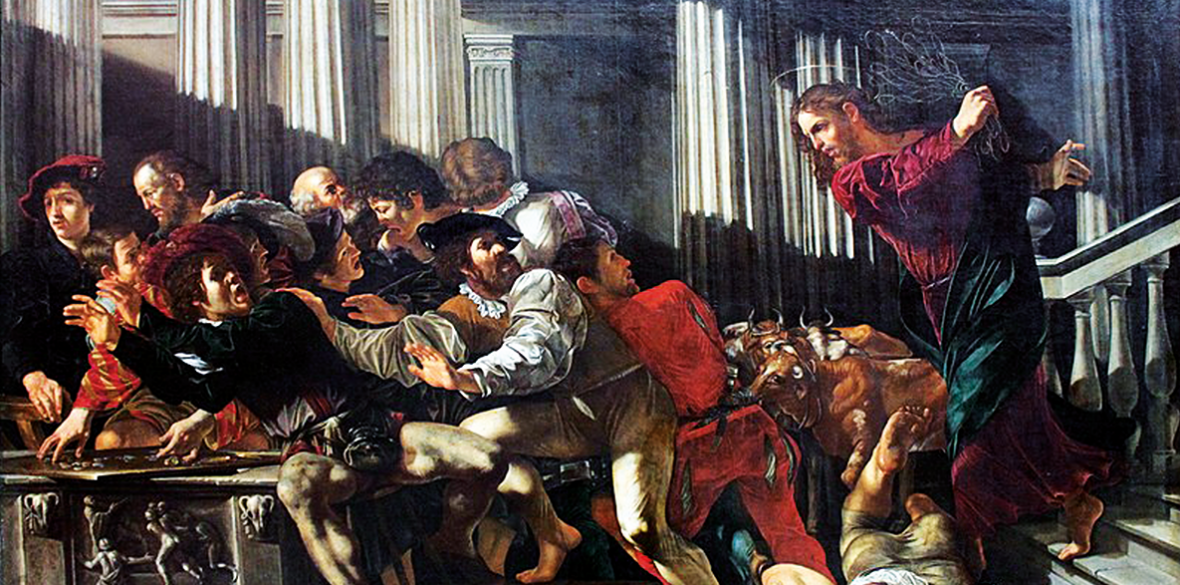
Books reconstructing the life of Jesus are numerous. They are typically idealistic and focus on Jesus as a great man who changed the course of history through his decisions and deeds.
What is rarely discussed in these modern lives of Jesus is how he was a product of the material circumstances of his time. It is crucial, we contend, to look at Jesus’s upbringing in the context of changing social and economic conditions in first-century Galilee.
There were two major urbanization projects which had a significant impact among the Galilean populace: the rebuilding of Sepphoris and the building of Tiberias. These projects benefited some and destroyed the lives of others. Gifts of land were given to the more influential people, but this also meant the displacement of others and the destruction of traditional rural households.
But we should not expect their reactions to these circumstances to tally with modern expectations of agitation and resistance.
In first-century Galilee and Judea, there were ready-made vehicles for discontent, notably banditry and millenarianism. While these were not mutually exclusive movements, Jesus and his associates sought an alternative in millenarianism.
Developing Eric Hobsbawm’s studies of agrarian social unrest, we should see millenarianism as a “pre-political” or “pre-capitalist” form of agitation. Millenarians offered a fantastical promise of an imminent new world order and a form of resistance to unjust rulers, elites, and their lackeys. Futile, no doubt, but there were limited options for actually transforming the world.
In line with dominant ideas of the time, this millenarianism was not egalitarian as is sometimes romantically associated with Jesus. The movement promised a future with a just king, and pride of place for its core members to judge who would be saved and damned in the imminent Golden Age.
The Jesus movement presented itself as a vanguard millenarian party, custodians of a new theocracy serving the interests of the peasantry.
They promised that the fortunes of the agrarian world would be turned upside-down. Non-elite sectors of Jewish society were guaranteed a life of plenty while the rich were to relinquish their wealth or suffer ruinous consequences. The Jesus movement even organized a “mission to the rich” to get elites to turn from their oppressive ways. Whether it was a successful mission is moot.
Instead of romanticizing Jesus as a great man of history, we instead argue that he should be seen as a culturally credible religious organizer who emerged from non-elite Jewish society. Jesus and his movement were dependent on and were a suitable conduit for the interests of the local peasantry.
And so the Jesus movement’s credibility in Galilee involved an emphasis on traditional peasant values, respectable interpretations of Jewish scriptures, and strict group discipline. This provided a public-facing, dignified alternative to a changing Galilee.
As households were facing upheaval, the Jesus movement formed its own alternative household, respectfully mimicking traditional family roles. They even faced ridicule, perhaps dismissed by outsiders as “effeminate” and “unmanly” as they were no longer seen fulfilling their expected roles in the traditional household.
In response, the Jesus movement presented itself as tough, muscular, and hardened, both in line and in competition with dominant notions of masculinity in the wider world, including the Roman empire.
The Jesus movement drew on Jewish traditions of “righteous martyrs” to develop ideas about dying a glorious death for the sake of God and country. Martyrdom was a defining feature of the public presentation of the movement’s understanding of its strength and prompted further skirmishes with the elite.
In Jerusalem, during the festival of Passover, underlying social and political anxieties would regularly flare up. In Jesus’s fateful trip to Jerusalem, the movement entangled with (and gained some support from) the volatile and unpredictable Passover crowds where he challenged what he saw as an exploitative financial system.
Jesus was seen to be enough of a threat to the social order for him to be arrested and crucified. Roman power cared little about the niceties of detail concerning whether a popular movement was violent or not.
But this was not the end of the movement. Key figures in the vanguard believed God had resurrected him back to life. Such beliefs were not unusual at the time and were perhaps even expected of a martyr.
That Jesus’s associates and sympathizers reported seeing him after his death is one reason for the survival of the movement. But it is not enough of an explanation for why the movement survived.
It could not have survived without networks and support on the ground. Religious and political ideas typically spread through social networks, and the survival of the Jesus movement is no exception.
Key networks for the spread of the movement beyond a parochial peasantry had already developed in Jesus’s lifetime through fishing communities and through the wealthier adherents to the movement (e.g., tax collectors), as well as through local scribes.
Households (including female heads of households) and workplaces helped the spread of the movement across the Mediterranean world.
Jewish gatherings or synagogues were also important pre-existing networks across the Roman empire, crucially with various local non-Jewish connections. The longer-term developments of roads, transportation, and communication were conducive to the spread of ideas of an overarching God—and a god of an empire.
Certainly, what became known as Christianity looked very different from the Jesus movement in Galilee and reflected different class interests. But it wasn’t entirely different.
Ideas of theocracy and imperial rule were present in the earliest days of the Jesus movement and could be remolded to form ideological support for the Roman empire.
Yet in becoming the ideological justification for the Roman empire and then of Christian Europe and later bourgeois power, Christianity simultaneously formed the language of resistance and Jesus’s words could be used against Rome, against feudalism, and against capitalism in the millennia that followed.
James Crossley and Robert Myles are authors of Jesus: A Life in Class Conflict, recently published by Zer0 Books.
As with all op-eds published by People’s World, this article reflects the opinions of its authors.
We hope you appreciated this article. Before you go, please support great working-class and pro-people journalism by donating to People’s World.
We are not neutral. Our mission is to be a voice for truth, democracy, the environment, and socialism. We believe in people before profits. So, we take sides. Yours!
We are part of the pro-democracy media contesting the vast right-wing media propaganda ecosystem brainwashing tens of millions and putting democracy at risk.
Our journalism is free of corporate influence and paywalls because we are totally reader supported. At People’s World, we believe news and information should be free and accessible to all.
But we need your help. It takes money—a lot of it—to produce and cover unique stories you see in our pages. Only you, our readers and supporters, make this possible. If you enjoy reading People’s World and the stories we bring you, support our work by donating or becoming a monthly sustainer today.













Comments